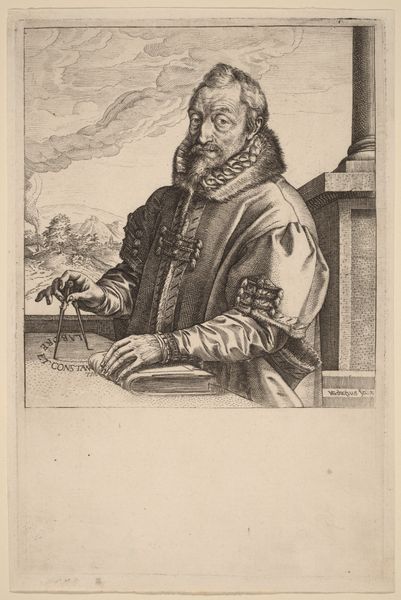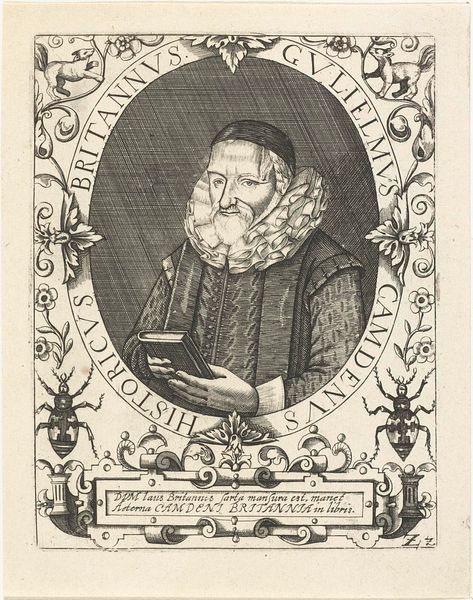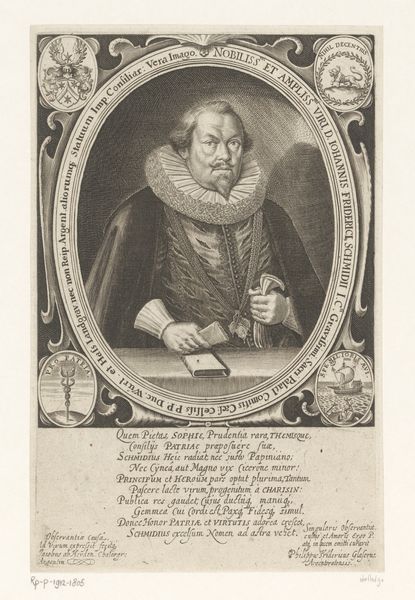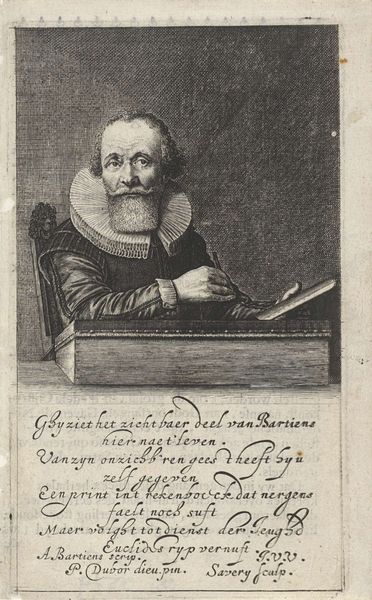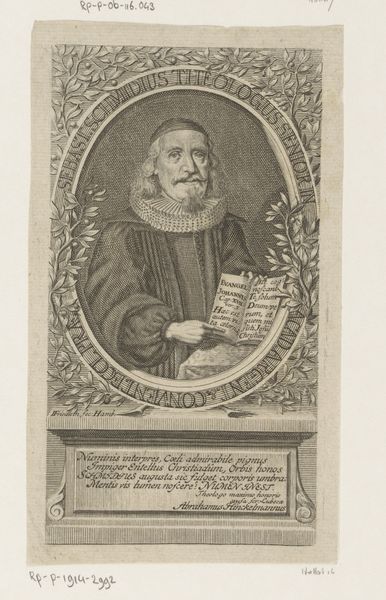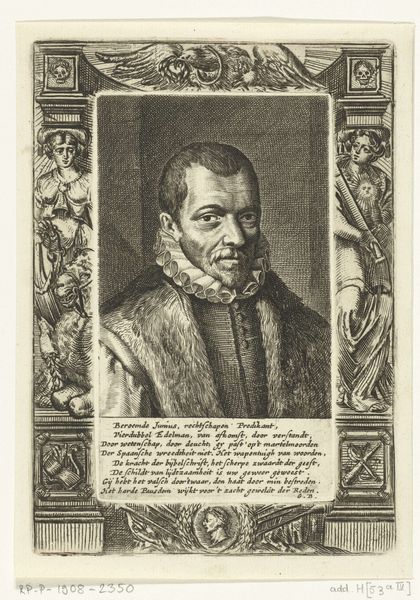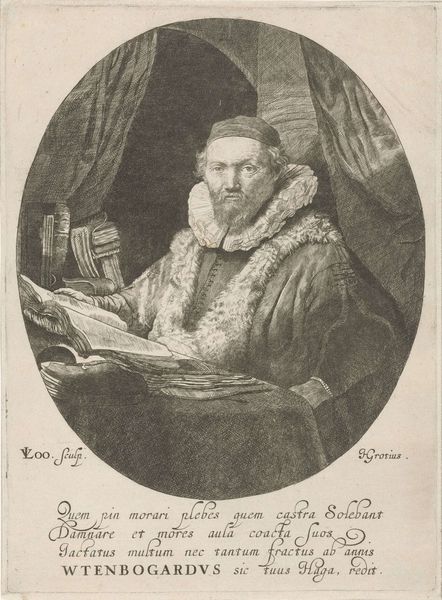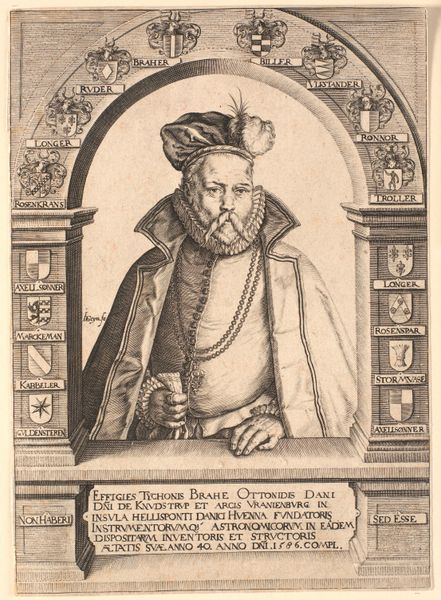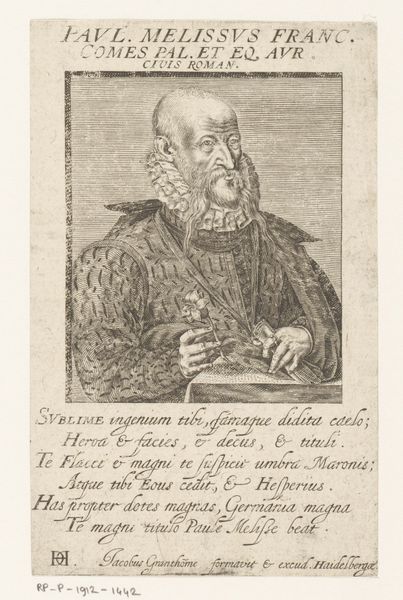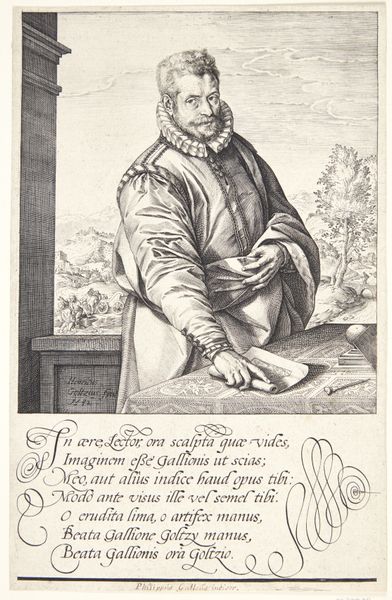
drawing, print, engraving
#
portrait
#
drawing
# print
#
old engraving style
#
figuration
#
11_renaissance
#
line
#
sketchbook drawing
#
northern-renaissance
#
engraving
Dimensions: height 204 mm, width 134 mm
Copyright: Rijks Museum: Open Domain
Editor: So, this is Hendrick Goltzius's "Portrait of Christoffel Plantijn," made sometime between 1581 and 1585. It's an engraving, a print. It feels quite formal, very detailed with all those lines. What do you see when you look at this, beyond just the sitter himself? Curator: What strikes me immediately is the confluence of labor evident in the piece. Look at the tools Plantijn holds – dividers. These signify his craft, his trade as a printer. But then consider the material reality of the engraving itself. It’s a reproduction, made using specific tools, skills, and a printing press. The artist and the sitter are linked by their participation in this world of making, of producing knowledge and material culture. What does the Latin inscription suggest to you about that process of making? Editor: Hmm, I see that "Constanter et Labore" is inscribed there on the page near his hands... Constancy and Labor. Is that commenting on the intense labor needed for both printing and creating the artwork itself? Curator: Precisely! Think about the labor involved in preparing the printing plates, in running the press, in the proofreading, the distribution – all the stages needed to get the book into the reader’s hands. This print becomes a testament to both Plantijn's contributions *and* to Goltzius's skillful manipulation of the material. Consider too, the role of patronage in this relationship between printer and engraver. Whose consumption and support fuels their labor? Editor: I hadn't thought about it that way, as a material object connected to labor. So, instead of just being a portrait of a famous person, it's about all the hands involved in bringing printed material to the public. Curator: Absolutely! The work asks us to look beyond just the image to the processes of its production, and to the network of people, skills, and capital required for its creation and dissemination. And to think critically about how these prints helped create and cement Plantijn's reputation. Editor: That’s fascinating. I'll definitely look at prints differently now. Curator: Indeed. Examining art through the lens of production and materials helps reveal deeper layers of meaning about its social context.
Comments
No comments
Be the first to comment and join the conversation on the ultimate creative platform.
